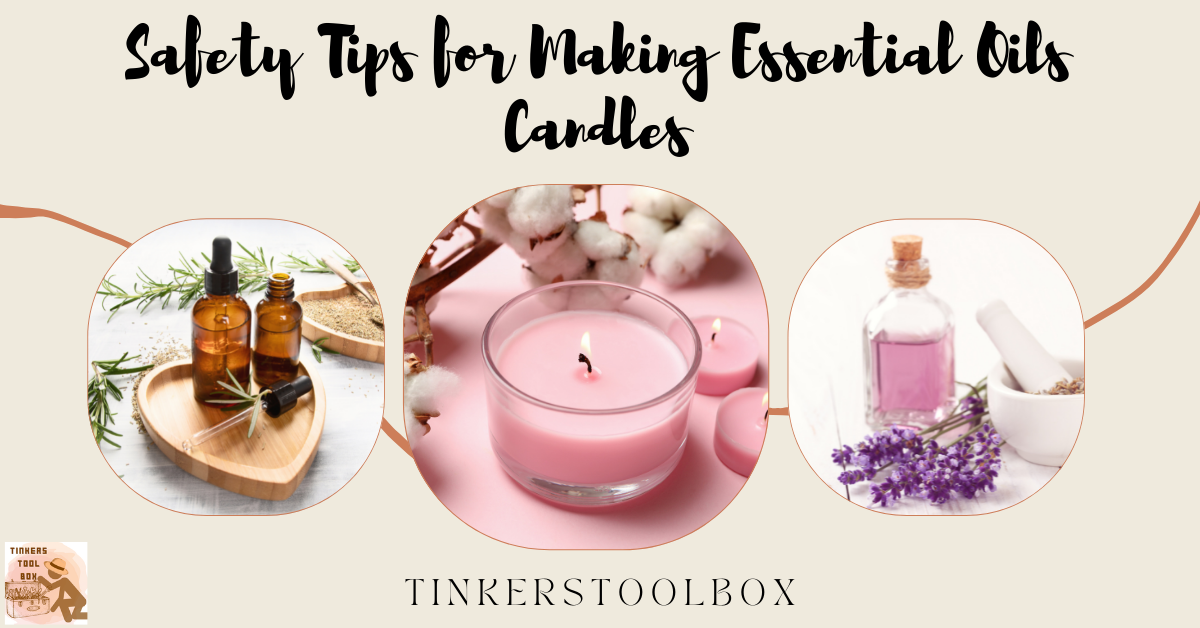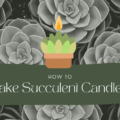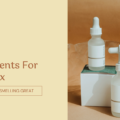Everyone loves scented candles for their pleasing aroma that lifts the mood of the room and promotes relaxation. More so when the candles are infused with healthy ingredients like essential oils. However, there is an increasing concern about using essential oils in candles as they are known to have a low flash point, causing them to easily evaporate when added to hot wax. Here are some tips to safely work with essential oils in candle making.
- 1. Proper Pour Temp: Pour the Essential Oils into the Hot Wax at the Correct Temperature
- 2. Be Specific: Use a Thermometer to Measure Exact Temperature
- 3. Wick Size Matters: Use a Smaller Wick For Your Candles
- 4. Slender Instead of Wide: Make Use of Narrow Candle Containers
- 5. Choosing Essential Oils: Consider Strong Aroma and Higher Flashpoints
- 6. Follow Proper Pouring Techniques: Do Not Add Essential Oils into an Already Burning Candle
- 7. Maximize the Natural Content: Pair Essential Oils with a Natural Candle Wax
- 8. Watch Out: Potential Allergy Triggers for Some Oils
- 9. Avoid Direct Contact with Pure Essential Oils: May Cause Allergic Reactions
- 10. Be Responsible: Inform Customers Regarding the Candle’s Ingredients
- 11. Be Informed: Know Which Essential Oils are Not Good For Pregnants
- 12. Take Note: Some Oils Are Not for Aromatherapy Candles
- 13. Do not Take Essential Oils Internally: These are Not Edible!
- Conclusion
1. Proper Pour Temp: Pour the Essential Oils into the Hot Wax at the Correct Temperature
A key method to producing well-burning essential oil candles is pouring the scent when the hot wax has reached a certain temperature. The advisable temperature for soy wax to receive essential oils is 140 degrees Fahrenheit and 158 degrees Fahrenheit for the beeswax, paraffin wax, and gel wax candles.
Essential oils are highly concentrated liquids acquired from plants and are perfect for creating aromatherapy candles. These liquids are volatile, so they evaporate easily when exposed to higher temperatures than their appropriate pouring temperature.
To lessen the chances that we’ll burn the essence before even blending well with the hot wax, we must ensure that they are incorporated at the appropriate temperature, which will allow the candle to take in as much fragrance and will be released slowly when the candle is lit.
Another thing to note about essential oils is that they can easily catch fire. With their flashpoints ranging from 100 to 250 degrees Celsius, they are classified as flammable substances when used in their pure form, which could easily ignite when exposed to higher temperatures than they can tolerate.
However, when these essences are diluted in candle wax, they would lose their flammable property and be a safe ingredient for your candles.
2. Be Specific: Use a Thermometer to Measure Exact Temperature
Measuring the correct temperature is highly important in candle making. We should not guess and experiment how much time we’ll melt the wax, when we will pour it, and when to incorporate the essential oils and other ingredients. As temperatures determine the end product of candle making, these should be carefully measured using an accurate instrument.
The melting and pouring temperatures should always be measured by a thermometer, not just any thermometer but a digital food thermometer or a contact thermometer. This instrument would give you the most accurate temperature as it is directly in contact and submerged in the hot wax, so the readings are close to perfect.
The incorrect temperature would mean an overheated candle wax, an essential oil poured at a too hot or too cold wax, and most, unfortunately, a scented candle with no scent throw at all. Thermometer measurements also ensure safety, as when you work with the correct temperature, no ingredient like wax or essences would ignite in your work area.
3. Wick Size Matters: Use a Smaller Wick For Your Candles
Essential oils are known to have a lower flash point compared to fragrance oils. As the essential oils are exposed to heat, from being mixed to the hot wax in the candle making process to the candle’s burning, the scents would easily evaporate, creating a weak scent throw.
Using a smaller wick in your candles is recommended since it would provide minimal heat and bring out the best aroma on your candles. When the essential oils are exposed to the right amount of heat from a smaller wick, there would be an even scent distribution throughout the candle, and the scents would not evaporate altogether at once.
Furthermore, a lower flashpoint means it will easily ignite when exposed to excessive heat. If you used candle wax with a higher melting point, the two ingredients would not suit each other and may not do good for your candle.
4. Slender Instead of Wide: Make Use of Narrow Candle Containers
Since you will be using a smaller wick for your essential oil candles, a narrow container would be the perfect match for this. When the small wick burns the candle, it will produce a smaller flame which would burn just a small portion of the candle’s surface.
If this happens with a candle in a wider container, the wick will not sustain enough heat to burn the whole candle evenly, resulting in candle tunneling.
Candle tunneling would be the main problem for smaller wicks, but the candle would burn evenly throughout its height when used with a narrow container. You may also ask the candlewick supplier for the recommended circumference of the candle container you will use. This ensures that there would be no waste of ingredients, and you’ll produce a well-burning candle.
5. Choosing Essential Oils: Consider Strong Aroma and Higher Flashpoints
When compared to fragrance oils, essential oils have relatively lower flashpoints. But if you do some reading, you’ll find out that various essential oils have higher flashpoints, making their aroma last longer in the candle. Hence, essential oils with more than 150 degrees Fahrenheit flashpoints are recommended for best results.
Some scents you may consider with guaranteed strong aroma are basil, cinnamon, geranium, lavender, and lemongrass. Palmarosa, patchouli, tranquility blend, and ylang-ylang are the best essential oils for your scented candles.
6. Follow Proper Pouring Techniques: Do Not Add Essential Oils into an Already Burning Candle
As mentioned before, essential oils are only harmful and flammable when in their concentrated form. In candle making, essences should be mixed with the hot wax at an appropriate temperature to help them blend well and produce a better scent throw when the candle is lit.
All candle makers should know that putting essential oils in an already burning candle is too dangerous. In an undiluted form, essential oils are highly flammable when exposed to high temperatures, especially when there is a flame. Whether you are putting essences to add more scent or experimenting, directly pouring essences in a lit candle is a big no-no.
7. Maximize the Natural Content: Pair Essential Oils with a Natural Candle Wax
One good reason we use essential oils in candles is to maximize their natural content for aromatherapy purposes. Pairing natural candle waxes with essential oils would be the best move to ensure that no toxic candle wax would be used as an ingredient.
There are numerous natural candle waxes in the market, with soy wax and beeswax as the front runners. Soy wax is characterized by its soft texture and decent scent throw. For stronger scent throws, use strong woody or earthy scents, spicy, and floral oils. Lavender and citrus oils are for milder scents depending on your preference.
The soft wax also allows adding essential oils at a lower temperature, reducing the chances of the scent evaporating easily into the air or, worse, burning off the essential oils.
Beeswax is among the best and most versatile candle making wax. It is a solid wax with a naturally sweet honey scent before adding the essential oils. When blended with natural scents, it would create a more distinct smell perfect for aromatherapy candles.
It is advisable to use stronger essential oils in beeswax, as the natural honey scent would sometimes become overpowering, shadowing the scent of the essence. Fragrances like eucalyptus, patchouli, and other earthy scents pair well with beeswax.
8. Watch Out: Potential Allergy Triggers for Some Oils
Essential oils are the perfect substances for aromatherapy candles, as they have some relaxing and healing effects to someone inhaling it. However, coming from natural sources would not guarantee that they are 100% safe for all people.
The highly concentrated plant substances may trigger some allergies and reactions like Ylang Ylang, which reportedly triggers headaches when inhaled undiluted. Candlemakers suggest that the maximum amount of essential oils in candles should be 10-11% only.
Furthermore, some essential oils labeled as non-toxic could have varying effects on some people depending on their age groups or medical conditions. It is common for young and older people who have medical conditions to be affected by the possible toxic effect of essential oils.
Your pets at home could also be at risk when exposed to essential oils in their pure form. Essences such as wintergreen, yarrow, anise, horseradish, thyme, and clove could negatively affect your pets.
9. Avoid Direct Contact with Pure Essential Oils: May Cause Allergic Reactions
Essential oils, in their undiluted and pure form, are highly concentrated substances from plants. We should always avoid direct contact with these substances, as some may not be good for the skin and trigger allergic reactions.
Avoid touching oils with your bare hands when mixing essential oils with the hot wax. Use a spoon or spatula to blend them well. Once the essential oils are incorporated into the wax in the appropriate amount, it will no longer harm the candle maker. Even so, just avoid having direct contact with them, in case you have allergies that you do not know.
10. Be Responsible: Inform Customers Regarding the Candle’s Ingredients
If you are producing candles to sell, customers have the right to know what ingredients are in the candles. This ensures that they are well aware of what kind of essences they are exposing themselves to and prevent any sensitivities that the essential oils candle may trigger.
11. Be Informed: Know Which Essential Oils are Not Good For Pregnants
Several essential oils are not good for pregnant. We are telling you this as you may be a pregnant candle maker or a pregnant mother who loves aromatherapy candles. It is crucial to know what oils are not recommended for contact with pregnant people, as there may be some complications that come with candles of these essences.
The best way to work around this is to consult your medical practitioner, midwife, or aromatherapist before using any of these essences. Once essential oils have been endorsed, they must be used only after the first trimester, at 1% concentration (half of its normal strength).
Essential oils that are best to be avoided in any stage of your pregnancy are camphor (Cinnamomum camphora), rosemary (Rosmarinus officinalis), sage (Salvia Officinalis), and Calvin oil (Juniperus Sabina). In addition, if you have a record of miscarriage, it is highly advisable never to use any essential oils throughout the pregnancy.
Just the same, lactating women are also at risk of the toxic effects of these essential oils. We recommend you completely avoid any contact with essential oils and aromatherapy candles during these times for your overall safety.
12. Take Note: Some Oils Are Not for Aromatherapy Candles
Some essential oils are not suitable for aromatherapy candles because of their toxicity levels, severe causes of irritation, and sensitization, which could cause some serious health risks. Manufacturers have the responsibility to avoid having these oils in the market. However, some eventually find their way into the industry and should be avoided at all costs.
Essential oils you should avoid using are parsley herb oil, pennyroyal oil, savin oil, tansy oil, wintergreen oil, and wormwood oil. When used in candles, the oils may trigger allergic reactions or worsen respiratory problems for users. Hence, we should always be mindful of our ingredients in candle making.
13. Do not Take Essential Oils Internally: These are Not Edible!
It is not advisable to directly apply essential oils to your skin. Hence the more you should not drink or consume it for internal use. Although it came from natural sources, and you might even reason out that plants, fruits, and vegetables also came from plants, there is a big difference between them.
Fruits, vegetables, and herbs are naturally edible and have nutritional effects on the body. However, we cannot compare them to pure essential oils, which are highly concentrated, and if they can irritate our skin, much more damage could be done to our body when we consume them.
Conclusion
Although labeled as all-natural and a healthier choice for scents, essential oils do have their share of toxic ingredients that you should avoid. That is why it is very important to dilute them in the melted wax using the appropriate amount to ensure the safety of the candle maker and the user. When used with caution, essential oils would bring out all the good in your candle, leaving you with refreshing scents and health benefits.















